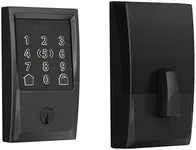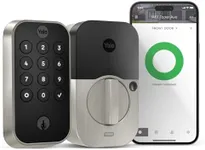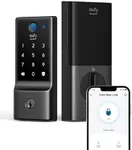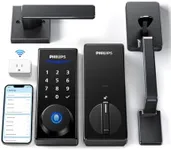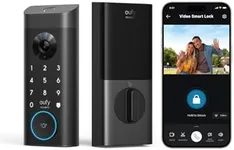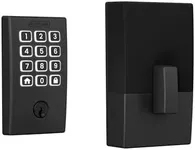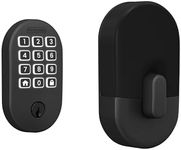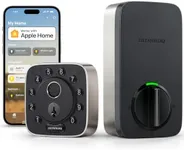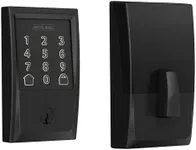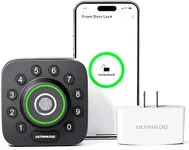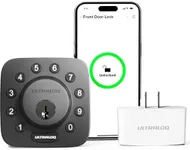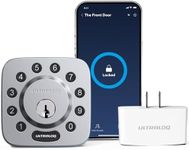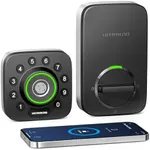Buying Guide for the Best Alexa Compatible Door Lock
Choosing an Alexa-compatible door lock can significantly enhance the security and convenience of your home. These smart locks allow you to control access to your home using voice commands, your smartphone, or even remotely. When selecting the right door lock, it's important to consider several key specifications to ensure it meets your needs and preferences. Here are the key specs to look out for and how to navigate them.CompatibilityCompatibility refers to whether the door lock can work seamlessly with Alexa and other smart home systems you may have. This is important because it ensures that you can control the lock using voice commands through Alexa. To navigate this, check if the lock explicitly states that it is Alexa-compatible. Additionally, consider if it works with other systems like Google Home or Apple HomeKit if you use those. Choose a lock that is compatible with your existing smart home ecosystem to avoid any integration issues.
Lock TypeLock type refers to the mechanism used by the door lock, such as deadbolt, lever, or knob. This is important because it affects the security and ease of use of the lock. Deadbolts are generally more secure and are a common choice for exterior doors. Levers and knobs are often used for interior doors. To pick the right one, consider the door you are securing and the level of security you need. For exterior doors, a deadbolt is usually the best choice, while for interior doors, a lever or knob may suffice.
InstallationInstallation refers to how easy it is to install the door lock. This is important because a complicated installation process can be frustrating and may require professional help. Some locks are designed for DIY installation and come with detailed instructions and all necessary hardware. Others may require more advanced tools and skills. To navigate this, look for locks that advertise easy installation if you plan to do it yourself. If you are not comfortable with DIY projects, consider a lock that offers professional installation services.
Power SourcePower source refers to how the door lock is powered, such as batteries or a wired connection. This is important because it affects the reliability and maintenance of the lock. Battery-powered locks are easier to install and can continue to work during power outages, but they require regular battery changes. Wired locks do not require battery changes but can be more complex to install and may not work during power outages. To pick the right one, consider your preference for maintenance and installation complexity. If you prefer low maintenance, a wired lock might be better, but if you want easier installation, a battery-powered lock is a good choice.
Security FeaturesSecurity features refer to additional functionalities that enhance the security of the door lock, such as tamper alerts, auto-locking, and encryption. This is important because it provides extra layers of protection for your home. Tamper alerts notify you if someone tries to break in, auto-locking ensures the door locks automatically after a set period, and encryption protects your data from being hacked. To navigate this, look for locks that offer the security features that are most important to you. If you live in a high-crime area, tamper alerts and strong encryption might be crucial. If you often forget to lock the door, auto-locking can be very useful.
Remote AccessRemote access refers to the ability to control the door lock from anywhere using a smartphone app. This is important because it allows you to lock or unlock your door remotely, grant access to guests, and monitor who enters and exits your home. To navigate this, check if the lock offers a dedicated app and what features the app includes. Choose a lock that provides reliable remote access if you travel frequently or want to be able to control your lock while away from home.
User CodesUser codes refer to the ability to create and manage multiple access codes for different users. This is important because it allows you to give temporary or permanent access to family members, friends, or service providers without sharing physical keys. To navigate this, look for locks that allow you to create a sufficient number of user codes and offer features like temporary codes or scheduled access. Choose a lock that meets your needs for managing access, especially if you have multiple people who need to enter your home.
